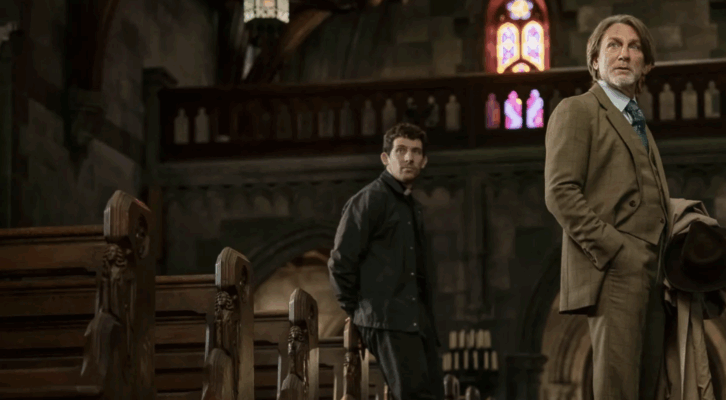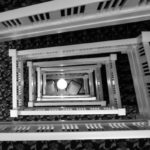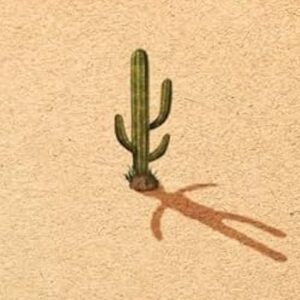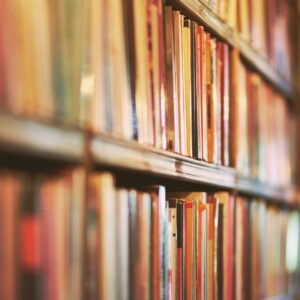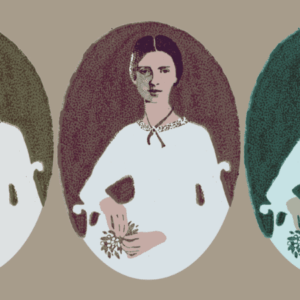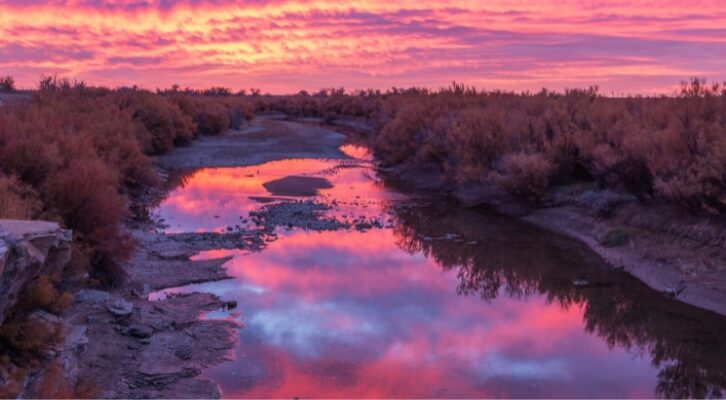
An Indigenous Theory of Water: Leanne Betasamosake Simpson on Rivers as Teachers
The Author of "Theory of Water" Offers Some Michi Saagiig Nishnaabeg Spirituality
Rivers are connectors. The rivers feeding into Lake Ontario and then the St. Lawrence connect me, for example, with Audra and her homeland. My people are called Michi Saagiig Nishnaabeg because we spent time at the mouths of the rivers that drain into Lake Ontario.
These are rivers that travelled as raindrops and runoff through the land, into the land, down the big river to the Atlantic. They are rivers that flood in the spring to carry more and shrink in the dying summer to conserve what they carry. Expanding and contracting; a tiny creek to a magnificent ocean—making a highway where, at the end, the river doesn’t exist anymore. It empties itself.
Rivers are the veins of our mother, the earth; they are the visual mapping of a watery network.
What, or where, is the center of a network?
creek stream river lake river ocean wombs of water, gatherings of gender non-conforming, genderqueer, Indigiqueer, trans, Two-Spirits, queer, lesbian, pansexual, bisexual, gay, asexual, intersex, questioning, and everyone in between, cis-women, cis-men, heterosexual, monogamous, polyamorous, old people, children, neurodiverse, neurotypical, abled and dis-abled bodies, land defenders, water walkers, parents, pregnant people, mothers, fathers, caretakers, language speakers, Elders, snow, knowl- edge holders and practitioners, hunters, trappers, fishers, medicine people, farmers, ricers, artists, maple trees, wild rice, salmon, pickerel, whitefish, five-lined skinks, rain, little brown, tri-colored and northern long-eared bats, landings, northern map, snapping, spiny softshell, spotted and wood turtles, American eels, monarch butterflies, Blanchard’s cricket frogs, golden eagles, bald eagles, eastern whippoorwills, barn owls, lake sturgeon, golden-eye lichen, boreal caribou, eastern caribou, Algonquin wolves, American badgers, grey foxes, wolverines, cougars, northern myotis, fawnsfoot, eastern flowering dogwood, four-leaved milkweed, small yellow lady’s slipper, massasauga rattlesnakes, winter, eastern white pines, tall grass prairies and black oak savannas, Jackson Creek, Otonabee, Rice Lake, Lake Ontario, St. Lawrence River, Atlantic Ocean, Sargasso Sea, clouds
Nibi decenters itself: it leaks, moves, flows and reconnects, not as real estate or enclosure or property, but as a living network, linking endless forms of life working with each other to bring about more life, more diversity of life, more abundance of life.
Rivers are the veins of our mother, the earth; they are the visual mapping of a watery network.
Water is a matrix of bonds and attachments amongst living things of all kinds, a cascade of living beings across time and space, on a cosmic scale, extending into ancient times and into the future. Water is a set of practices that socially, intellectually, emotionally, spiritually and physically reproduce the planet.
Practices that are deeply relational and reciprocal. Practices that embody ethics privileging kindness and gentleness, creating architectures of care across time, space and species.
The thing about a network is that the sustaining parts are not the hubs, but the connections between the hubs. Nibi, the air, the land. The thing about a network is that the individual beings aren’t so important, but rather the quality and strength of the relationships between beings—so much so that the hubs, or the bodies of the network, are composed of these relationships. Life is made in the interstitial spaces between beings.
flowing
breathing
spilling
leaking
bleeding
drinking
crying
My understanding of mino-bimaadiziwin is that it decenters the idea of the human, decenters the needs, desires, knowledges and influences of humans, and favors forms of life that layer many ecologies, beyond physical bodies.
It is this understanding that leads me to ask: What if, in resisting colonialism and capitalism, we didn’t focus on being recognized within the knowledge, political and ethical systems of the state, which means being recognized in the category of “human” as defined by the state?
What if, instead, we obliterated the categories of gender and human and rights altogether, and created lateral, co-operative systems of sharing, all in service to bringing forth more life?
This idea of decentering, of leaking, is Anishinaabe, and many Anishinaabeg have shared it, spoken it, sung it, prayed it, written it and explained it to me, before me and alongside me.
The more I think about these ideas, the more I realize that many of our stories, teachings and embodied practices, the methods we use to generate theory, are focused on continually decentering human experience—or perhaps placing human experience and our morally bankrupt knowledge systems within a plurality of other experiences and knowledges, and blurring or obliterating the boundaries between humans and all other living things.
So many of our stories are about humans getting into trouble by being greedy, by thinking at the expense of feeling, by feeling at the expense of thinking, by being out of balance in some way, and plants and animals showing the way back to balance and reciprocity. In our stories, the other living beings in the network of Anishinaabeg life are teachers and co-creators.
Bears never find themselves unemployed or in need of career counseling. Moose don’t take over beavers’ means of production. Robins don’t hire other birds to get worms for them in the morning. Cardinals don’t have nannies looking after their young and cleaning their nests so that their lives are more comfortable. Caribou don’t have armies guarding their territory. Salmon don’t stockpile food in the riverbed.
The exception is always human: we are always trying to make life more, and this leads to the diminishment of life, it leads to less life. We humans need a lot more caretaking and intervention than other beings do, simply to function in a healthy and sustainable way within the web of life.
In our knowledge system, the Michi Saagiig Nishnaabeg share everything with all living things and their formations. We are deeply interdependent. We are intercommunal. We are but one form of life in a complex web of cascading lives.
We are no more important—and many would say we are less important—than the other beings and systems making up the universe. We have no more “rights” than any other living thing in that web. We are not special, extra or exceptional. We are not owed the lives of other living things.
We are not owed the planet.
We are not owed comfortable lives.
We believe this not for self-involved reasons—not because our continuance depends upon the earth being healthy, not because our lives depend upon this, even if they do—but because, ethically, who do we think we are? Who are we to place ourselves above all other living things, most of which we don’t understand? Who are we to place ourselves first when we struggle and fail so often to do what comes naturally to other forms of life?
When Indigenous peoples protest, we are motivated to put our bodies between the state and our relatives in the plant and animal world because these relatives are part of us.
Nishnaabemowin, the Ojibwe language, is composed mainly of verbs—words that encode the kinetics of living and our world-building practices. While there are several categories of verbs, language learners first learn two—inanimate and animate verbs—in order to be able to conjugate and speak the most basic of sentences.
Animate and inanimate. Living and non-living. Beings with Spirit, and objects without life or spirit. When studying the language of a culture that is immersed in the land, finding the division between the two is not as easy as one might think.
A tree is a living thing, and therefore animate. A table made of wood is an object without a spirit, and therefore inanimate. Humans, bears, and cedar are always living, even when we are dead, because our spirits have agency in the spirit world. Chairs, plastic water bottles and cars are not.
The spirit world is never an easy thing to write about, but I am compelled to do so here because it is a non-negotiable feature of Indigenous thinking and living. Within Nishnaabewin, for example, it is one of the reasons humans cannot be centered in our theorizing and living—because not only does the spirit world exist, it is always influencing everything, and is populated with the spirits of every being, plant, animal and human.
Bears have knowledge. So does the five-lined skink. So do the small yellow lady’s slippers. So do monarch butterflies. So do golden eagles. So do the eastern white pines. So do the Great Lakes. We make worlds in concert with all these living beings; we exist within a network of deep relationality with these living beings.
For my ancestors and my Elders, and for many water-based practitioners, Knowledge Holders and water protectors, spiritual practices provide the foundation for our interactions with other living beings. This is one reason—beyond our need for survival—that we are not all animal rights activists and vegans, for example.
Our spiritual relationships allow us to negotiate the consent we need to harvest plants and animals for our continuance. It is the quality of our relationships that determines how well we are able to share, provide and caretake with other living beings around us. Some Anishinaabeg scholars such as Robin Kimmerer, Aaron Mills and Niigaanwewidam Sinclair use our practice of miinigowizin to explain how we sustain this system.
As they describe, this is a system of gift giving, of profound and endless sharing. Every living thing has a gift, and when these gifts are shared with the collective, we build a world made of gifts, whether intellectual, emotional, temporal, based on wisdom or on material being.
Each life is predicated on all forms of life giving their gifts to sustain the collective. Bimaadiziwin is propelled by sharing. And reciprocity is a practice that strengthens bonds and attachments between living beings through continual sharing.
Put another way: the constant practice, both individual and communal, of redistributing “resources” or gifts within a system of Anishinaabe caretaking is a way of weaving our- selves into the network of living.
It is these relationships that continually renew the self-determination, sovereignty and freedom of the plant and animal relations with whom we humans share space in the past, present and future. And our spirits, and those of all other living things, continually reshape the boundaries of our home space, our physical bodies and our material reality, in order to form a profound and intimate connection.
This cycle takes place in the context of my favorite Nishnaabeg concept, one that Doug talked about often: Gizhewaadiziwin, the practice or the art of love, kindness, compassion to all, sharing, caring, respect, humility, tenderness. This is not romantic love, but a sense of connection, the attachment we have to one another as living beings. It is generosity, benevolence.
When Indigenous peoples protest, we are motivated to put our bodies between the state and our relatives in the plant and animal world because these relatives are part of us. Our bodies are not only our bodies, but hubs of relationships in a networked web, cascading in every direction and dimension, and our spirits travel well beyond them into the cosmos of living beings.
For me, this knowledge is a tremendous asset.
It is a tremendous asset in thinking and writing about anti-colonialism and anti-capitalism. And it is a tremendous asset in living life because it invokes greater intimacy, vigorous communication and relentless honesty, a thinking-through with forms of life other than humans.
From a Nishnaabewin perspective, we cannot engage in any sort of world-building without that communing; it simply cannot be sustainable otherwise. Our current world is the perfect illustration of this.
______________________________

Theory of Water: Nishnaabe Maps to the Times Ahead by Leanne Betasamosake Simpson is available via Haymarket.
Leanne Betasamosake Simpson
Leanne Betasamosake Simpson is a renowned Michi Saagiig Nishnaabeg scholar, writer and artist, who has been widely recognized as one of the most compelling Indigenous voices of her generation. Leanne is the author of seven books, including Theory of Water: Nishnaabe Maps to the Times Ahead(2025) and her 2021 novel Noopiming: The Cure for White Ladies, which was named a best book of the year by the Globe and Mail, and was shortlisted for the Governor General’s Literary Award for fiction.











